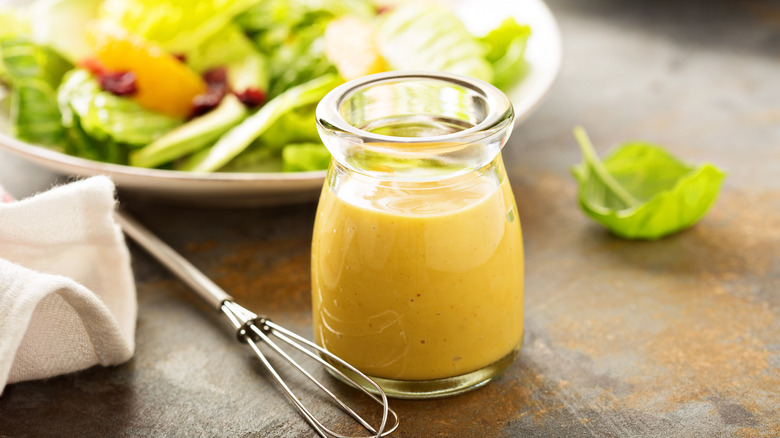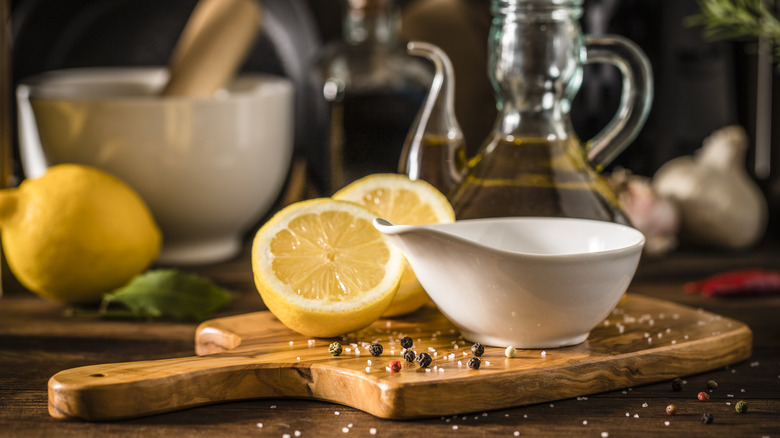The Tasting Tip That Saves Subpar Salad Dressing
While creating homemade salad dressing is a zesty undertaking, avoiding common salad dressing mistakes is a must to achieve a dazzling end result. You can determine whether your dressing is just right by sampling it twice. First, taste a small amount of the dressing by itself — about ¼ teaspoon — to get a feel for the balance of flavors. Second, drizzle a bit of dressing on a piece of lettuce — or another ingredient in your salad to see how well it meshes with the other ingredients — then sample that. Keep in mind that even tasty dressings can falter when blended with the rest of your salad components, which is why it's so important to try them out together before serving.
This double test lets you know if you're happy with the flavor and texture of your dressing — and if you're not, there are a few things you can do. Consider what's missing in the dressing, or if any ingredients are a bit overwhelming. For example, a super bright and tangy dressing with lots of acidity can be tempered with a bit of honey, which will impart a mild sweetness to the dressing. You can also add some more oil into the mix but be careful that you don't go overboard.
How to rescue an excessively oily dressing
Oil is an essential component of salad dressing, but too much of it can mute the flavors and make the dressing heavier than it needs to be. In this case, incorporating an acidic ingredient will reduce the oil content while also adding a bit of tang to the dressing. Freshly squeezed lemon juice is one helpful option, as it will brighten up the flavors while simultaneously thinning out the dressing, so that it's more palatable when drizzled over your salad.
Vinegar is another good option for amending oily dressing. And because there are many distinct types of vinegar, you can carefully fine-tune the flavor of the dressing by using different varieties. For example, apple cider vinegar will lend a mildly sweet flavor to the dressing recipe, while balsamic vinegar will impart a more potent sweetness coupled with a bit of tanginess and earthiness. If you're looking for something with a more fruit-forward flavor, red wine vinegar is a great choice. As for dressing that lacks a discernible flavor, there are lots of amendments you can try.
What to do when a dressing is too bland
When it comes to bland dressings, a bit of salt can be a real lifesaver. However, adding other ingredients can create a rich and complex flavor above and beyond what's conveyed with oil, acid, and salt. If you want your dressing to have a bit of a kick, fresh ginger, red pepper flakes, and paprika are fantastic additions. Just be sure to add spices in small increments — and taste twice after each addition — or you may end up with a homemade dressing that's a touch too spicy.
Perhaps you want to deepen the flavor of the dressing without adding any heat. In this case, focus on herbs like rosemary, oregano, or basil — fresh or dried. You can also experiment with aromatic ingredients, such as garlic and chives. If you enjoy a creamier salad dressing, consider adding something like crème fraiche. With a taste similar to sour cream, albeit with some nutty undertones, crème fraiche can elevate the flavor of a bland dressing while also creating a delightfully creamy texture. Just remember whatever ingredients you choose, always taste your dressing twice before tossing and serving your salad.


